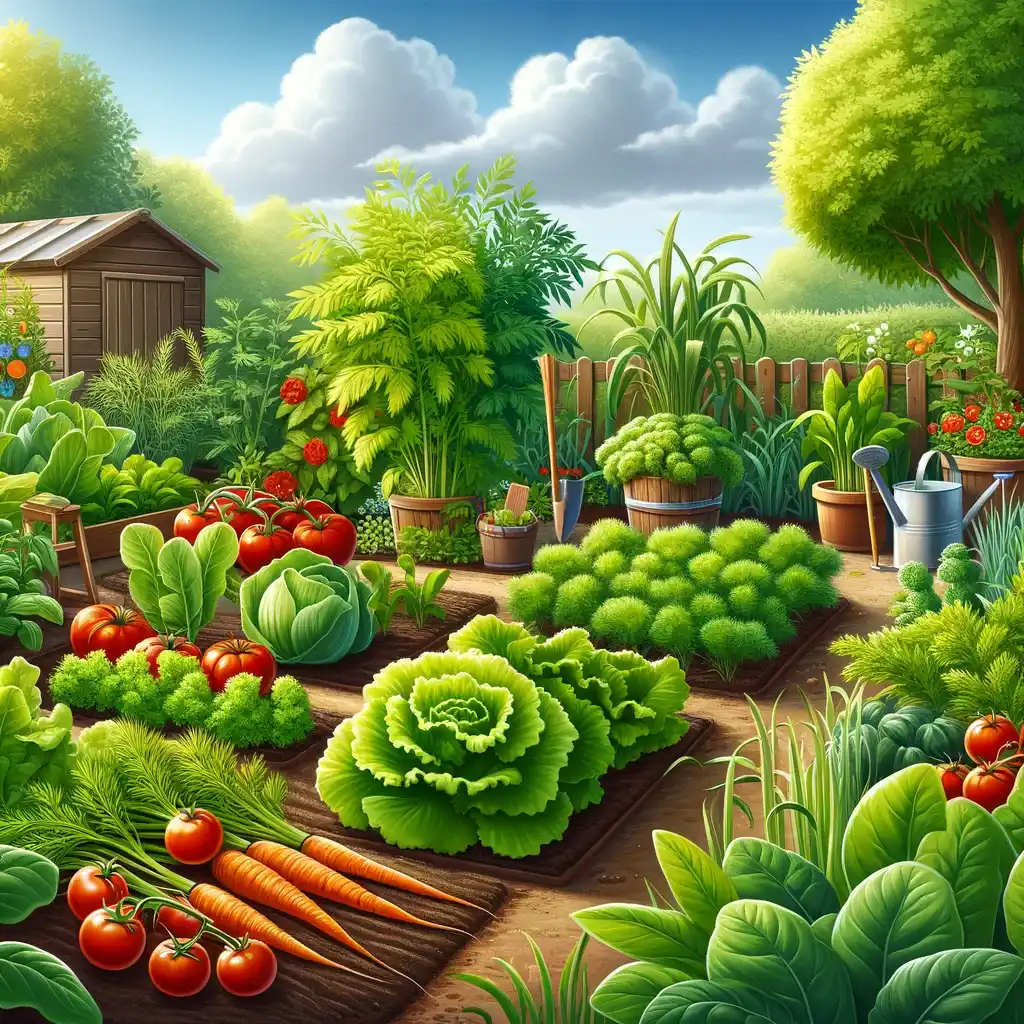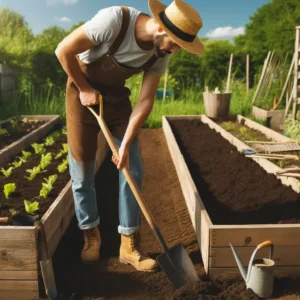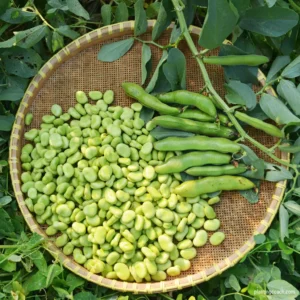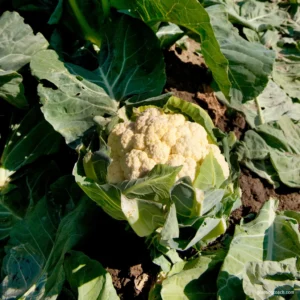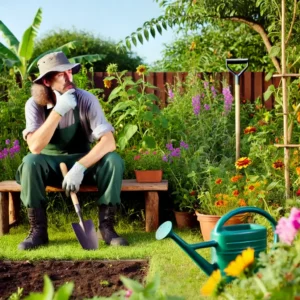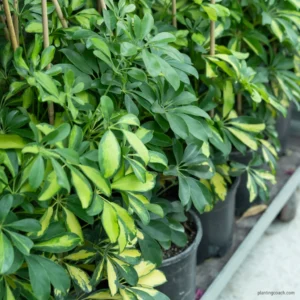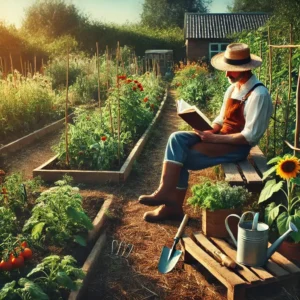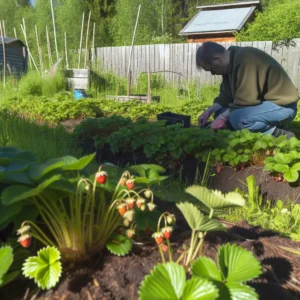The joy of stepping into a vibrant summer garden and picking fresh vegetables right from the garden of one’s own is incomparable. Growing your own vegetables is a rewarding hobby and ensures you have access to the freshest and most nutritious produce during the summer months. With longer days and warm weather, summer offers the perfect conditions for many vegetables to grow.
In this guide, we’ll explore the Best Vegetables to Grow in the Summer, focusing on their benefits, growing tips, and how to handle common challenges. Whether you’re a seasoned gardener or just starting, understanding what to plant for the best harvest can make all the difference in your cooking habits and gardening adventures.
Here are the 7 Best Vegetables to Grow in the Summer
Tomatoes – The Summer Staple
Tomatoes are conventional summer plants. Growing in warm conditions, they require consistent care to produce a fruitful harvest. When planting tomatoes, choosing a site that receives at least six to eight hours of direct sunlight is crucial. They need well-drained, fertile soil, ideally enriched with compost or other organic matter. Start by planting seedlings rather than seeds to get a head start on the growing season. Regular watering is critical, especially as fruits begin to form. A deep, weekly watering helps encourage deep-root development. Mulching around the plants can also help retain soil moisture and control weeds.
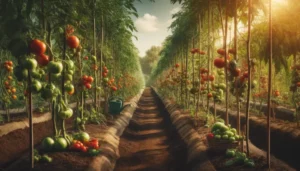
As your tomatoes grow, they will need support. Stakes or cages can keep the plants upright and promote a healthier growing environment. Keep an eye out for pests like aphids and tomato hornworms, and diseases such as blight or blossom end rot. Addressing these issues early can keep your plants healthy and productive. There are numerous varieties of tomatoes to choose from, each with unique flavors, colors, and textures. From the tough ‘Beefsteak’ to the sweet ‘Cherry’, there’s a variety to suit every appetite. Harvesting begins once the tomatoes show a uniform color and firmness, usually 60 to 80 days after planting, depending on the variety.
Bell Peppers – Vibrant and Flavorful
Bell peppers are another fantastic choice for the summer garden. They add a burst of color and sweet or tangy flavors to dishes. Bell peppers require similar growing conditions to tomatoes, including well-drained soil rich in organic matter and plenty of sunlight. Start with seedlings to extend the growing season. Bell peppers grow well in warm soil; using black plastic mulch can help raise soil temperatures and speed up growth. Like tomatoes, bell peppers need consistent moisture, especially once the plants begin to flourish and set fruit.
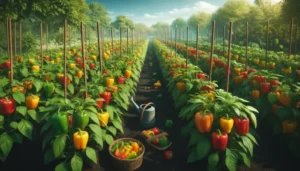
Pest management is crucial for maintaining healthy bell pepper plants. Regularly check for signs of pests such as aphids, spider mites, and the occasional caterpillar. Natural predators like ladybugs can be beneficial for controlling aphid populations. As the season progresses, provide support for your plants if they produce heavy fruits or seem to struggle under the weight. Stake them early to avoid damaging the roots later on. Harvesting bell peppers can begin once they are firm and have reached their full color—red, yellow, green, or purple, depending on the variety. The longer bell peppers remain on the plant, the sweeter they become, as they fully develop their sugars and flavors.
Cucumbers – Ideal for Beginners
Cucumbers are among the easiest vegetables to grow during the summer due to their rapid growth and abundant yield. Ideal for beginner gardeners, they require some basic care to grow. Cucumbers love the sun and do best in light, sandy soil that drains well. Start by planting seeds directly into the ground after the last frost when the soil is warm. Space the seeds about 36 to 60 inches apart in rows, as cucumbers can spread extensively. Using vertical supports like trellises can save space and promote better air circulation, reducing the risk of disease.
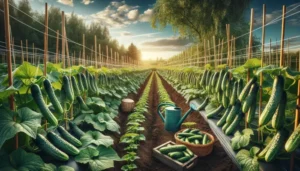
Water is crucial for cucumbers, especially during flowering and fruiting. They need at least one inch of water per week and more during particularly hot weeks. Mulching helps preserve moisture and keeps the roots cool. Watch out for pests such as cucumber beetles and squash bugs, which can be managed through manual removal or the use of organic pesticides. Cucumbers are ready to harvest when they are firm and bright green, typically within 50 to 70 days from planting. Regular harvesting encourages the plants to produce more cucumbers, ensuring a season-long supply.
Zucchini – A Prolific Producer
Zucchini is a must-have in any summer garden due to its prolific production and versatility in cooking. Planting zucchini in well-composted soil can dramatically improve yield as these plants are heavy feeders. They need plenty of space—about 2 to 3 feet between plants—for adequate air circulation, which helps prevent fungal diseases. Zucchini plants are also sun lovers, requiring full sun to produce the most fruit.
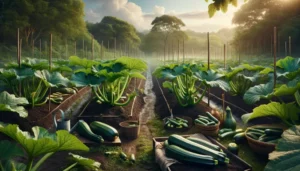
Water zucchinis deeply, aiming for the base of the plants rather than the leaves to avoid leaf spoilage. A regular watering schedule ensures steady growth and fruit development. Keep an eye out for pests like squash vine borers and aphids, which can be controlled through careful monitoring and organic interventions. Zucchini can start to be harvested within 40 to 60 days of planting. Frequent harvesting encourages the plants to produce more fruits and prevents them from becoming too large and seedy.
Green Beans – The Hardy Choice
Green beans are known for their hardiness and easy-care nature, making them perfect for an adequate summer garden. They can be grown in a variety of soils, though they prefer a well-drained, moderately fertile ground. Direct sowing seeds after the danger of frost has passed works best, as beans do not tolerate being transplanted well. They need a moderate amount of water, consistent but not excessive, to grow.
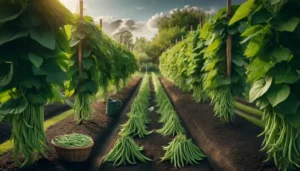
Depending on the variety, support may be necessary. Pole beans will require trellises or stakes to climb, while bush beans are more compact and do not require such assistance. Green beans are relatively low-maintenance but keep an eye out for common pests such as bean beetles. Harvesting begins when the beans feel firm and snap easily, usually within 50 to 60 days for most varieties. Regular picking encourages further production, extending the yield into late summer.
Eggplants – Heat-Loving Perennials
Eggplants are another instance that flourish in the heat of summer. They require a long growing season and grow in well-drained, fertile soil enriched with organic matter. Plant eggplants in a sunny spot after the soil has thoroughly warmed up. They need regular, deep watering to develop fruit, but the soil should be allowed to dry out between waterings to prevent root diseases.
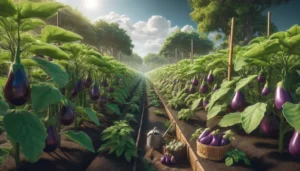
Stake eggplants early to support their tall stems and heavy fruits. Regular feeding with a balanced fertilizer every few weeks will help maintain strong growth. Watch for pests like flea beetles, which can be prevented by using row covers or organic sprays. Eggplants are ready for harvest when their skin is glossy and the flesh just gives way under slight pressure. Picking fruits instantly when they are mature encourages the plant to produce more.
Swiss Chard – Colorful and Nutrient-Rich
Swiss chard is a colorful and nutrient-rich option for summer gardens, known for its tolerance to heat and versatility in dishes. It can be grown in both full sun and partial shade, although too much heat can cause it to bolt. Plant seeds directly into rich, well-drained soil, spacing them about 12 inches apart. Chard requires consistent watering, especially in dry conditions, to keep its leaves tender and sweet.
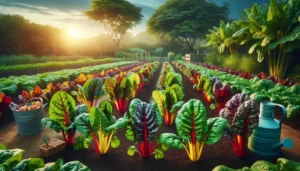
Pest problems with Swiss chard are minimal, but watch for leaf miners and caterpillars, which can be controlled organically. Harvesting can begin when the leaves are large enough to eat, usually about 50 days after planting. Cut leaves from the outer edges, allowing younger leaves to continue growing and producing throughout the season.
Summary
Growing vegetables in your summer garden is both a productive and enjoyable way to engage with nature while providing fresh produce for your kitchen. We’ve covered a variety of vegetables that not only grow in warm weather but also enrich your gardening experience. From the strong and ever-popular tomatoes and bell peppers to the easy-going cucumbers and prolific zucchini, each plant offers its own unique benefits and flavors. We also discussed the adaptable green beans, the heat-loving eggplants, and the vibrant Swiss chard, all of which can contribute to a diverse and bountiful garden. Remember, the key to a successful garden lies in proper planning, consistent care, and the joy of tending to your plants throughout the season.
FAQ
Q1: What are the most heat-tolerant vegetables to grow?
A1: Vegetables like eggplants, peppers, and tomatoes are particularly heat-tolerant and grow in the high temperatures of summer. These plants not only withstand the heat but often require it to produce their best yields.
Q2: How often should I water my summer vegetable garden?
A2: Most summer vegetables need at least an inch of water per week, but this can increase with higher temperatures and less frequent rain. It’s important to water deeply and less frequently to encourage strong root growth, rather than shallow daily watering.
Q3: What are some natural pest control methods for these vegetables?
A3: Natural pest control can include introducing beneficial insects like ladybugs and lacewings to control aphids. Using neem oil, diatomaceous earth, or homemade sprays such as a mixture of water and mild soap can also be effective against a range of pests.
Q4: Can I grow these vegetables in containers?
A4: Many vegetables, including tomatoes, peppers, and cucumbers, can be successfully grown in containers. Make sure to choose containers large enough to accommodate the plant’s root system and provide adequate drainage.
Q5: What are some common challenges in growing summer vegetables and how to overcome them?
A5: Common challenges include managing pests and diseases, ensuring adequate water, and dealing with extreme heat. Regular monitoring, using mulch to retain soil moisture, and providing some shade during the hottest parts of the day can help manage these challenges effectively.
